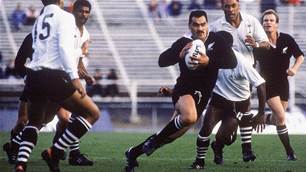If you are after a Sandbelt experience that will have you craving more because you’ve had a lot of fun from holes 1 to 18, Long Island is the course for you.
Whenever discussion among golf partners turns to favourite courses of the Melbourne Sandbelt and I am asked for my preferred options, I am always hit with a curious look or two when I follow up Royal Melbourne, Kingston Heath and Victoria with Long Island.
“Where?” is the stock standard reply, especially from those not entirely familiar with the expanse and quantity of layouts that call the Sandbelt home.
I might have given the same ‘where’ answer a dozen years ago too but after missing out on a tee time at the neighbouring Peninsula Country Golf Club, I ventured next door to Long Island and negotiated a start on a course I knew very little about. What an eye-opener!
I can recall finishing that round and walking back to the car confused and thinking, why is this place such an unknown? Every time I have been back to play the course I have the same thought when I leave and the only thing I can pin it on is this: the St Andrews Old Course syndrome.
Please explain! Well, I have long held the belief that if the New course and Jubilee course at St Andrews were on the other side of Scotland, instead of next to the Old Course, they would be more highly regarded, more popular. In the shadow of the great course, they are not fully appreciated for their quality. The same can be said for Royal Melbourne’s East course.
In the case of Long Island, it too suffers from being in a golfing neighbourhood where world-class courses outnumber McDonalds restaurants. I’m not saying Long Island should be positioned shoulder-to-shoulder with Royal Melbourne and Kingston Heath. It’s simply not in the same class but if you are after a Sandbelt experience that will have you craving more because you’ve had a lot of fun from holes 1 to 18, Long Island is the course for you.
It is for this reason I rate Long Island one of my Sandbelt favourites. It’s not an arduous journey (6,189 metres from the back markers), it covers good golfing terrain and it calls on you to think about your shots, even short pitches from the middle of the fairway. The green complexes are also typically Sandbelt, with wide openings and plenty of bunkers cut into the edges of the putting surfaces, .
The sandy undulating land, where the course now lies, began last century as the Frankston Racecourse. What a racecourse it must have been as the topography here is far from being flat and conducive to the sport of kings.
Nearly 10 years after the last race was held, a developer had a plan to build a golf course next to the already established Peninsula club. But due to the Great Depression, the plans were put on hold until 1933 when an approach was made to course designer Alex Russell – who worked with Dr Alister MacKenzie on Royal Melbourne’s West course and created the same club’s East course – to assess the property.
Although his report was favourable, Russell, who had reservations about the financial viability of the project, said he could not spare the time to design the layout. So the job went to Gordon Oliver, an expat Brit who, at that time, had an empty golf course design portfolio.
It is testament to his ability that much of his creation – with the exception of three holes – went unchanged for decades. The trio of holes that did change – the 7th, 8th and 9th holes – were rebuilt by the prolific designer Vern Morcom in 1946 and, in doing so, gave rise to one of the best par-3s in the Sandbelt.
Morcom replaced the par-5 9th because of the blind second shot the hole presented. This created a new par-4 8th – now known as ‘Hogsback’ – and the 130-metre par-3 9th, which is appropriately called ‘The Lookout’.
Hogsback, a gentle 310 metres, is a unique hole simply because the fairway is actually shaped like a hog’s back so tee shots down the middle are channelled to the left or right edge of the fairway. Good club selection is required to hold the green, which slopes away from front to back.
The 9th is the shortest hole at Long Island but that makes it no less treacherous. The green is huge for such a short hole so, therefore, the penalty for missing such a target is stiff. Three deep bunkers line the putting surface to the left and another two bunkers can be found to the right, while there is a steep drop-off awaiting the player who hits too strong and over the back of the green. This hole also runs across the highest point of the course and on windy days club selection here can be the difference between making par and a double or triple bogey.
The opening hole of the back nine, again well named as ‘Dogleg’, is a Sandbelt classic. From the elevated tee, the hole plays much shorter than its 350 metres if you can tip-toe your drive past the edge of the bunker on the inside corner of the dogleg. Stray into the bunker and the best you will do here is make bogey. Find the fairway and a short iron into a receptive green will give you a shot at birdie.
Actually whoever was responsible for naming the holes at Long Island did a great job. The par-4 11th is another of the appropriately named offerings around this par-72 layout. Known as ‘The Lane’, the 338-metre hole is seemingly tighter than most of the holes requiring a driver from the tee. A massive bunker cutting in from the left indicates the best direction from the tee. Long hitters can fly the edge of the bunkers to leave a wedge into the green, which slopes markedly right to left. Shorter hitters might consider coming into the green from the right half of the fairway to take the left greenside bunker out of play.
Five strong par-4s close out the round with the longest, and perhaps best, of the quintet being the 384-metre 17th, known as ‘The Rise’. Thick clumps of ti-tree, just beyond thin strips of rough, border both sides of the fairway ready to inflict the ultimate penalty on the misguided drive. Ideally, the tee shot should be played to the left half of the fairway to offer the best approach to the elevated green, which slopes markedly from back right to front left. The scheme of bunkers to the right of the green inevitably causes most players to aim for the centre or left half of the green but the steep slope of the putting surface can feed the ball off onto the fringe or into greenside rough.
In an era where there are plenty of new courses being built that are designed to punish and send you home with far less golf balls than when you started, it is great to play a course that is designed to be enjoyable and is fully complemented with beautifully kept playing surfaces. For me, Long Island is one of those courses.
THE COURSE
LOCATION: Dandenong Rd, Frankston, Victoria. About 45 minutes’ drive from Melbourne CBD via Eastlink.
CONTACT: (03) 9786 4122.
WEBSITE: www.longislandgolf.com.au
DESIGNER: Gordon Oliver (1938); Vern Morcom (1948).
PLAYING SURFACES: Santa Ana/common couch (fairways) and bentgrass and Poa Annua (greens).
PGA PRO: Richard Quested.
GREEN FEES: Limited tee times available (Monday, Wednesday PM and Friday). Manager introduced guests, with a handicap, $100. Member introduced guests, $60.
THE CLUB
MEMBERSHIPS: Membership is open in all categories, for men, women and juniors with a range of playing rights to suit each individual. The club is currently offering no entrance fee for week day membership.
CORPORATE AND GROUP DAYS: Long Island’s team of qualified professionals can assist you with the complete organisation and hosting of your company golf day. Corporate Golf events may be arranged for Mondays or Fridays, with a choice of morning or afternoon tee times for golf and a number of different catering packages available. Every event from small business meetings and large golf tournaments to celebration dinners can be catered for.
AWARDS: Winner of the Victorian Pro Am Course of the Year 2008, 2009 and finalist in 2010. Victorian Pro Am of the Year for 2008, 2009 and 2010.
Ranked No.57 in Golf Australia’s Top-100 Courses January 2012.
Related Articles

International Spotlight: Omanu Golf Club

Celebrity Kiwi couple tee off in paradise



.jpg&h=115&w=225&c=1&s=1)









